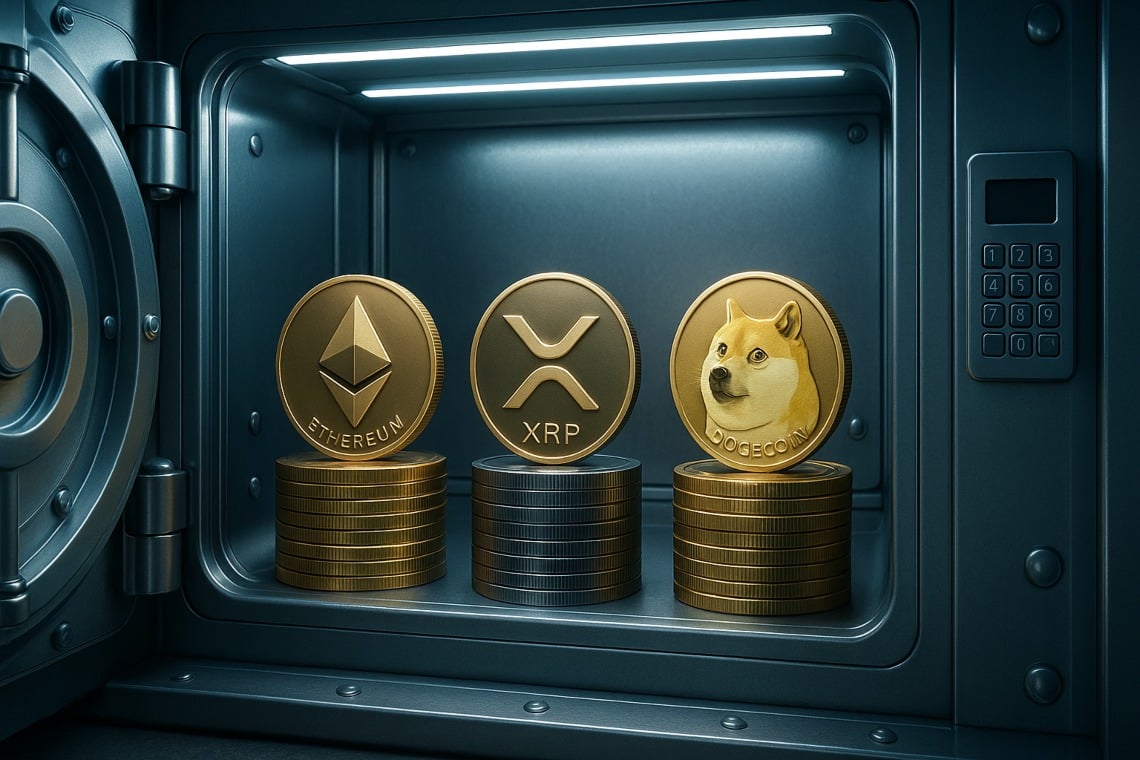Why are companies buying altcoin?

Did you know that only 0.3% of publicly traded companies in the world already have reserves in Bitcoin… and even fewer in altcoins? But the trend is exploding!
What are crypto treasury and why they revolutionize corporate finance
In recent months, the world of criptovalute is witnessing a true paradigm shift: a growing number of publicly traded companies are including altcoin like Ethereum, Solana, and XRP among their strategic treasury reserves.
It is no longer just about Bitcoin: the new frontier is called “altcoin treasury”. But why do companies make this choice? What are the opportunities (and risks) for the business and for investors?
From MicroStrategy to altcoin: how the phenomenon is born
In 2020 MicroStrategy, led by Michael Saylor, revolutionized the concept of treasury management by investing billions of dollars in Bitcoin.
The result? An increase in the value of the stock, international visibility, and the creation of a new business model: the company itself as a listed crypto “ETF”.
Now the script repeats itself, but on an even larger scale: several companies are adopting the MicroStrategy strategy, but focusing on altcoins.
The objective is twofold:
- Differentiate from the “Bitcoin-centric” market
- Attract investors looking for exposure to new cryptocurrencies (particularly where spot ETFs do not yet exist)
The reasons for the altcoin bull run
1. Opportunities for yield and growth
Many altcoins offer greater growth potential compared to Bitcoin, especially in the initial stages of adoption or with innovative technologies (e.g., Ethereum with smart contracts, Solana with fast and low-cost transactions).
2. Staking and passive income
The altcoins based on Proof-of-Stake allow companies to earn passive income (staking yield) simply by holding the tokens and participating in the security of the network.
3. Competitive advantage and visibility
Companies that are “early adopters” in the world of altcoins can become true references in the sector, attracting capital, media attention, and strategic partnerships.
4. New favorable accounting rules
The new FASB regulations in the USA allow for the accounting of gains on cryptocurrencies (not just losses), making the management in the balance sheet more convenient and transparent.
How does the strategy of companies work? The “playbook” explained simply
Companies do not just buy altcoins:
- They issue shares or convertible bonds to raise capital from the market
- They use the proceeds to acquire other altcoins
- If the stock price remains higher than the value of the crypto on the balance sheet, they can continue to issue new shares, strengthening the exposure and the value for the shareholders
Flywheel effect: in a bull phase, the stocks soar (+150% on average the day after the announcement of altcoin purchase; +226% at 30 days).
Attention, however: in a bear phase or with illiquid altcoins, the mechanism can reverse, amplifying the losses.
Table: The main companies that have announced altcoin purchases (2025)
“`html
| Company / Ticker | Country | Altcoin | Sector | Announcement Date | Value of Altcoin Held |
| Nano Labs (NA) | USA | BNB | Semiconductors | 24/06/2025 | $1B (announcement) |
| SharpLink Gaming (SBET) | USA | ETH | Online Betting | 27/05/2025 | $427.2M |
| DeFi Development (DFDV) | USA | SOL | Real Estate SaaS | 04/04/2025 | $83M |
| Eyenovia (EYEN) | USA | HYPE | Ophthalmic Tech | 17/06/2025 | $37.1M |
| Sol Strategies (HODL) | Canada | SOL | Crypto & Blockchain | 12/09/2024 | $82.8M |
“`
“`html
Announcement Effect: What Happens Next?
“`
Key data (source: Animoca Brands Research, June 2025):
- +161%: average increase in stock price on the day of the announcement
- +226%: average increase after 30 days
- Effect on the altcoin? In the short term, almost none, because purchases often occur after the announcement.
What are the benefits for companies (and for altcoins)?
- Companies: greater visibility, attraction of capital, possibility to “monetize” volatility and passive income via staking.
- Altcoin: more demand, liquidity, legitimization in the financial market, growth of the ecosystem.
- Traditional investors: regulated access to crypto otherwise unavailable (lacking spot ETFs on many altcoins).
The risks: what could go wrong?
Volatility and financial leverage
If the price of altcoins drops or stays stagnant for too long, companies risk:
- Rapid and amplified losses (especially if they have used debt)
- Difficulty in repaying convertible bonds
- Pressure from shareholders to liquidate crypto reserves
Specific risks of altcoins
- Lower liquidity compared to Bitcoin
- Technological and governance risks (bug, hack, centralization)
- Competitors that can dilute value with new projects
Conclusion: the new frontier of corporate finance
The purchase of altcoins as a treasury reserve is the most innovative (and discussed) trend of 2025 among the most dynamic and visionary companies. On one hand, it offers enormous opportunities for growth and differentiation, while on the other, it requires risk management, skills, and a long-term vision.
One thing is certain: the convergence between traditional finance and crypto has just begun… and it could forever change the way companies protect and grow their capital.


